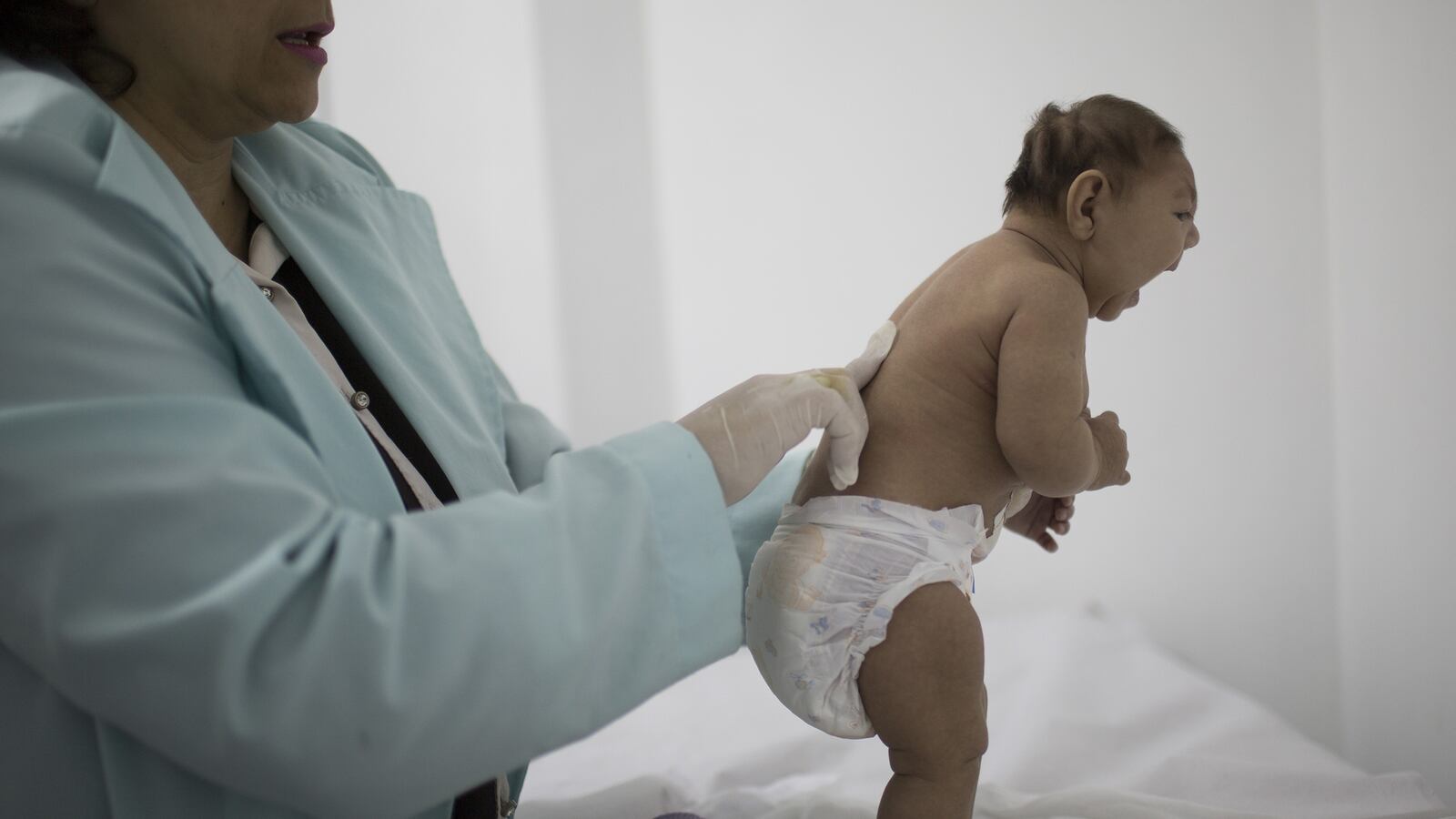Dr. Koen Van Rompay helped stop the spread of HIV and now he’s trying to do the same with Zika.
A Belgian veterinarian turned virologist, Van Rompay was a part of the team who in the 1990s developed the most widely used antiretroviral drug word, Tenofovir. The drug was approved in 2001 (initially sold under the brand name Viread) and has since been administered to more than 10 million HIV-positive people. Tenofovir found a second life as one of the two active ingredients in a new prophylactic called Truvada.
Van Rompay describes himself as a “humble link” in the chain of researchers who helped tackled the HIV epidemic, but his research shows otherwise: his 1996 study (PDF) on rhesus monkeys was the first to show Tenofovir’s anti-HIV effects.
Experimenting with the drug on rhesus monkeys at UC Davis’s Primate Center, he eventually proved that it could drastically reduce the chances of a fetus getting HIV in utero. Now the expert is preparing to try to inoculate pregnant rhesus monkeys with Zika in the coming weeks. It’s a battle against a virus he’d never worried about.
“I was shocked by the apparent magnitude of the problem of babies born with microcephaly,” he told The Daily Beast. “I was also surprised how little was known about the virus… the few publications I could find about studies in macaques was from those early days, more than 60 years ago.”
Perplexed by Zika and its apparent effect on fetuses, Van Rompany reached out to his colleagues for help.
Through emails and phone calls, he’s gathered experts in fields ranging from epidemiology to obstetrics. The situation resembles the early 1990s when similar groups were coming together to fight HIV.
“Even though there are many epidemiological and biological differences, both epidemics are fueled by socio-economic conditions of poverty in all its aspects, including poor access to health care and proper information,” Van Rompany said. “That requires global long-term efforts.”
For an effort this large, Van Rompay knows his team can’t be the only one. As he mobilizes his team, other groups nationwide—one in Washington and the other in Wisconsin—are doing the same. In constant contact with each other, the research teams have begun to form a Zika brain trust of sorts, filling in the holes of each other’s research with their own.
Van Rompay says he’s never seen collaboration like this in his three decades of research, “but I like it because if the science is good, you don’t have anything to hide.”
“This is why we became scientists, to help unravel things like this. The way things are going, the way we’re communicating, this is how research should go,” he said.
The researchers are racing against a virus that has infected an estimated 1.5 million people in Brazil alone and frightened even more by causing terrifying cases of microcephaly, abnormally small heads and brains in newborns. A vaccine may be as much as $1.5 billion and 20 years away, so finding a way to stop transmission in utero is the next best thing.
The National Institute of Allergy and Infectious Diseases told The Daily Beast in a statement it has already funded six studies so far, partially by directing existing resources to this work so researchers are not waiting on grants.
“We are very worried about an epidemic of birth defects—we need a vaccine, but in the meantime we need a therapeutic [means] that will prevent mother-fetal transmissions,” says Dr. Kristina Adams Waldorf, leader of the research group at the University of Washington.
Waldorf is a renowned OB/GYN who has spent more than 30 years studying infectious diseases. As news about microcephaly’s connection to Zika began to spread, she called around to the experts she knew looking for help.
“We are really trying to accelerate our work as much as we can… pressing down on the gas pedal, so to speak, because of the seriousness of the global health impact,” she said.
David O’Connor joined the Zika fight almost accidentally: He was studying HIV in Brazil when he became one of the first people to locate Zika there. Now he’s back at the University of Wisconsin to study the virus—and broadcast the findings in real time.
“Never tried sharing data like this before,” he tweeted on Feb. 14, one day before his experiment began. “Feels like walking into a country for the first time. Exciting, but don’t know what to expect.”
O’Connor’s team is performing an experiment on 15 male rhesus monkeys, testing their blood and semen daily to find out how long the virus remains in bodily fluids.
“Three macaques challenged with Zika virus this morning,” he tweeted last week. “Now we hope to learn when, where, and for how long the virus replicates.”
O’Connor explained online that data is being released in real time in order to “assist other researchers and stakeholders.” While he concedes that releasing data about animal experiments is often “inadvisable,” he wrote that he “argued vigorously” that the Zika outbreak warrants “transparent, open-data sharing.”
Waldorf says she’s confident that, together, they’ll find a solution to Zika. Based on his experience with HIV research, Van Rompay is too.
“The race is very similar, but I have hopes that it will be easier to develop a vaccine against Zika virus than it is against HIV,” he said. “Compared to 25 years ago, there is now a very large arsenal of antiviral compounds available that researchers are already starting to screen in vitro for activity against Zika virus, and if necessary, make further chemical modifications.”
The biggest difference between the two races, it seems, is how much collaboration is going into the effort. Something that Van Rompay suggests may be a game changer. “I’m hopeful,” he says. “It’s a very great team effort. For me being in the field, I don’t see this very often.”






